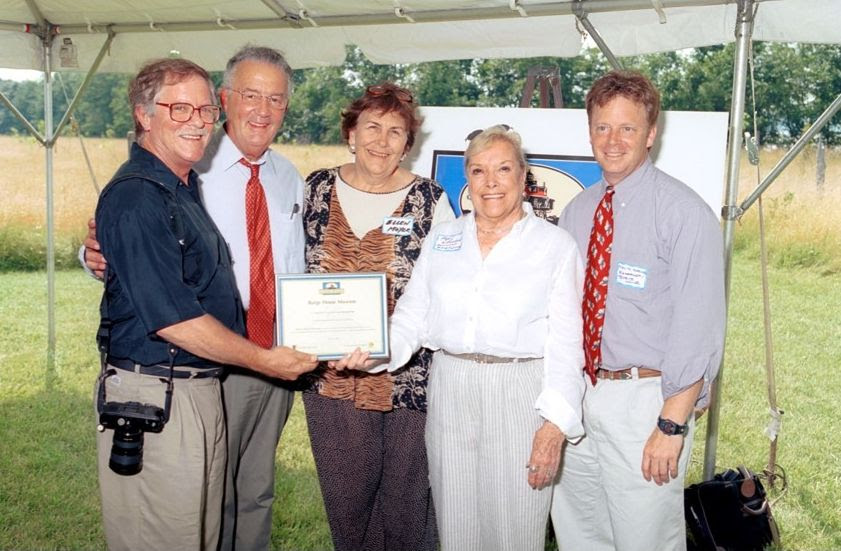Senator Paul Sarbanes, second from left, launching the first Chesapeake Gateways in 2000.
By Jonathan Doherty
Paul S. Sarbanes, United States Senator from Maryland from 1977 to 2007, died on December 6. Much is already being written about this effective, kind, and unpretentious man and his remarkable career in public service. And much of that will highlight his commitment to conserving and restoring the Chesapeake Bay.
Here, we focus on just one simple act of Senator Sarbanes and the ripples that have grown from it.
Twenty two years ago, Senator Sarbanes added language to a larger bill making its way through the Senate. A simple page of text in Title V, the “Chesapeake Bay Initiative Act of 1998.”
The breadth of the individual words stand out. Cooperate. Identify. Conserve. Restore. Interpret. Natural. Cultural. Historical. Recreational. Archeological. Federal. State. Local. Nonprofits. Private sector. Communities. Public education. Public access. Sites. Trails. Tour roads. Scenic byways. Gateways. Watertrails. Technical assistance. Financial assistance. Grants. Network. Chesapeake Bay. Chesapeake Bay Watershed.
These words gave birth to the Chesapeake Bay Gateways Network and to a clear role for the National Park Service in relation to the Chesapeake.
In the early years of Gateways, Senator Sarbanes often attended events announcing new Gateways or financial assistance awards. He was there for the very beginning — the photo above — under a tent at Piscataway Park on a very, very hot June day. He promptly took off his suit jacket and rolled up his sleeves to speak, joking about the gnats that were biting everyone, and putting all at ease.
Over the years, Senator Sarbanes’ bill has produced many things. Interpretive panels at sites spread across the watershed. Museum and visitor center exhibits. New trails. Hundreds of miles of mapped water trails. Canoe, kayak, and boat launches along dozens of waterways. Paddling programs getting kids and adults on the water. Websites promoting hundreds of Chesapeake sites and experiences. Plans, designs, and feasibility studies. Trainings on interpretation. Conferences and meetings for networking and collaboration to share the Chesapeake story. New initiatives to document sites important to Black Americans and to engage Latinx communities at Gateways.
And sustained partnerships. The network of Chesapeake Gateways, now entering its third decade, is reenergizing, engaging scores of partners in workshops, as the news of Senator Sarbanes passing broke. The Chesapeake Conservation Partnership, which took shape beginning in 2009, grew from some of the key words in the Senator’s 1998 bill. These partnerships, facilitated by NPS Chesapeake, convene hundreds of people around the watershed to advance the work set out by those 22 year old words: identify, conserve, restore, interpret, educate, provide access.
One simple Act does not define a life. Certainly not the life of Paul Sarbanes which involved so much more. But the ripples of just one act can illustrate the consequence of a life in public service.
Lightning Update is a regular communication of the Chesapeake Conservation Partnership. Any opinions expressed are those of the authors and do not necessarily reflect positions of the Partnership or member organizations.
To share a success story, news, or important event, send your information to:
Support for the Chesapeake Conservation Partnership is provided by:
National Park Service Chesapeake
EPA Chesapeake Bay Program
USDA Forest Service
Pennsylvania Department of Conservation & Natural Resources
Maryland Department of Natural Resources
Virginia Outdoors Foundation
US Fish & Wildlife Service
Chesapeake Conservancy
The Chesapeake Conservation Partnership is co-convened by:




